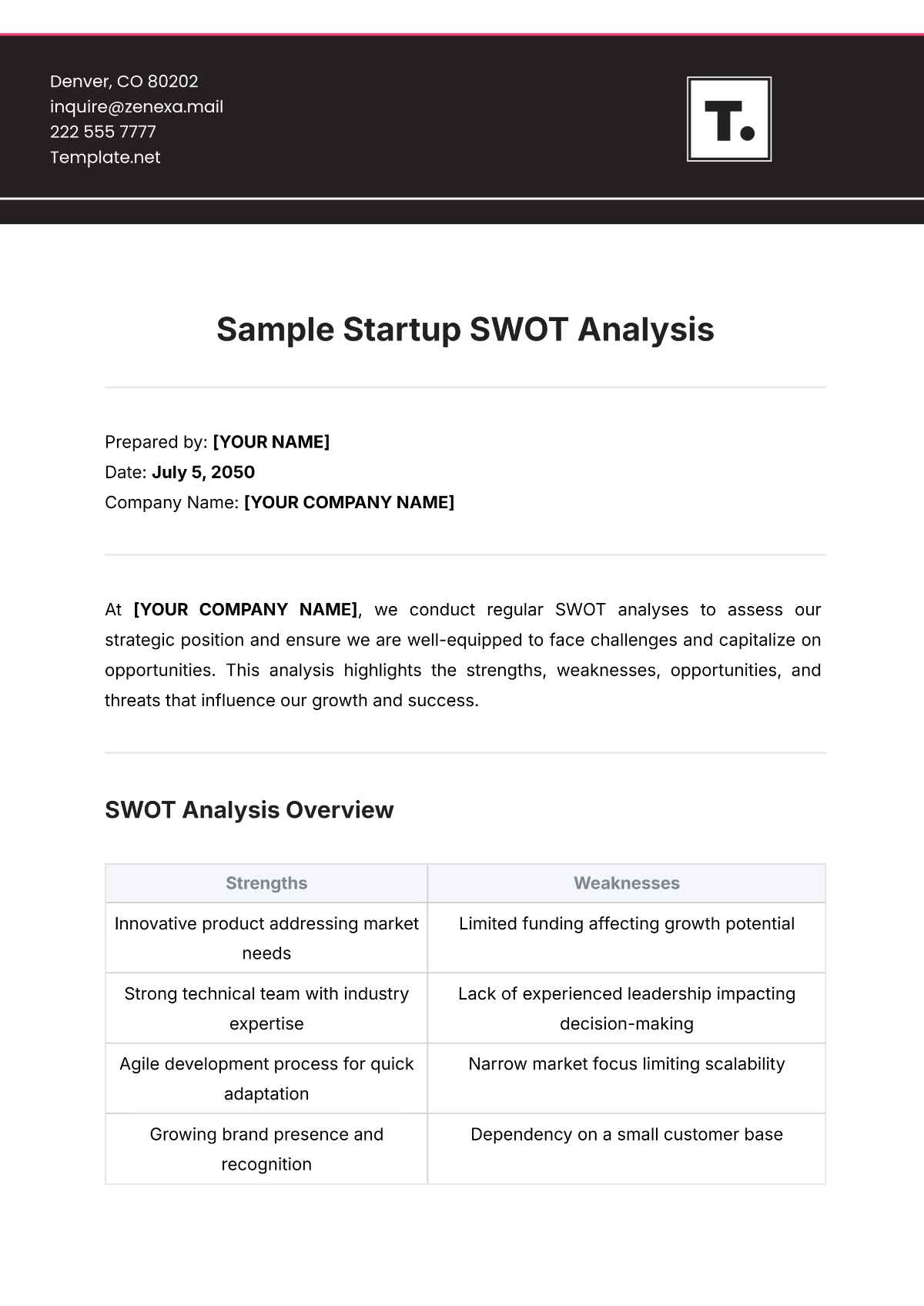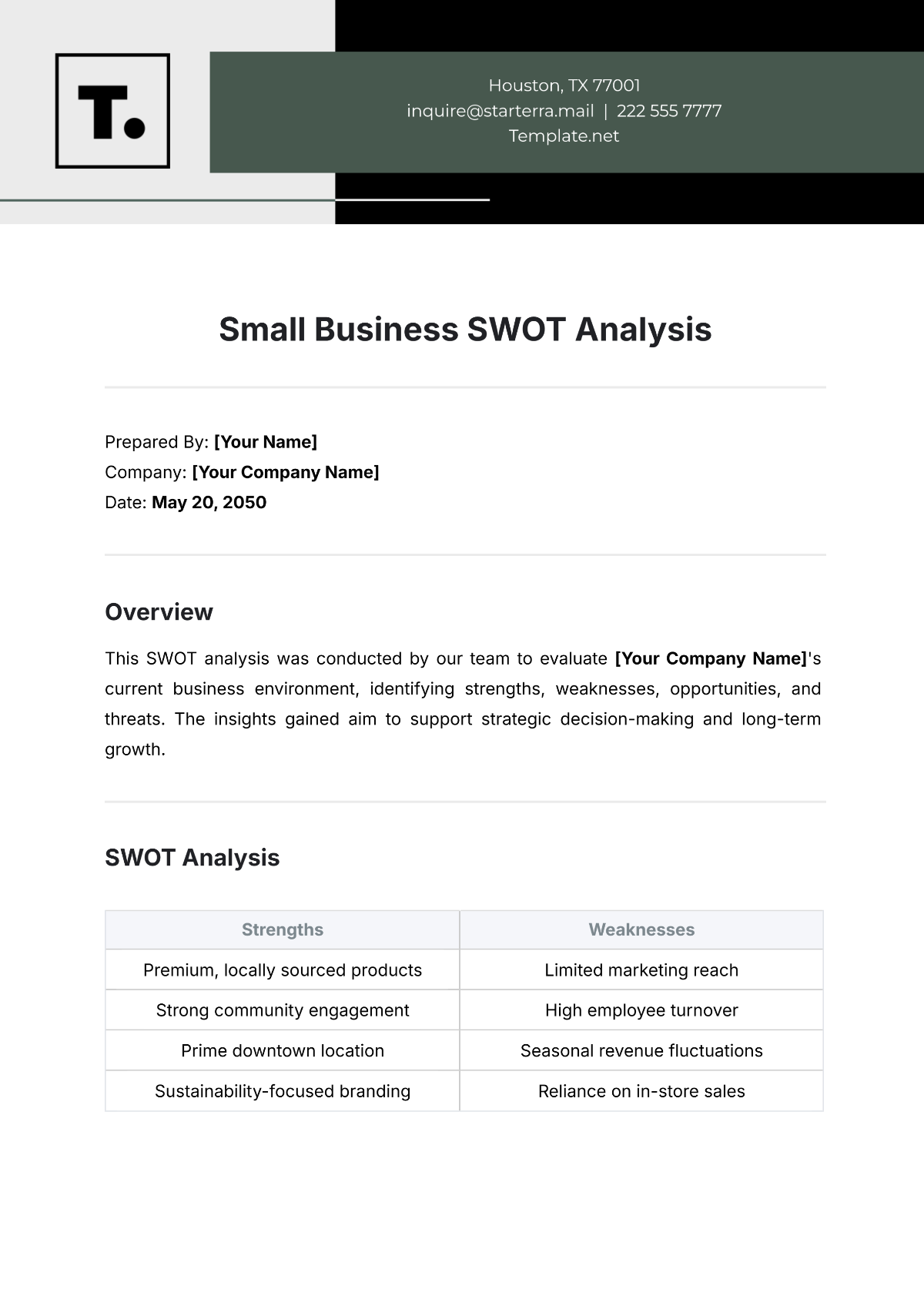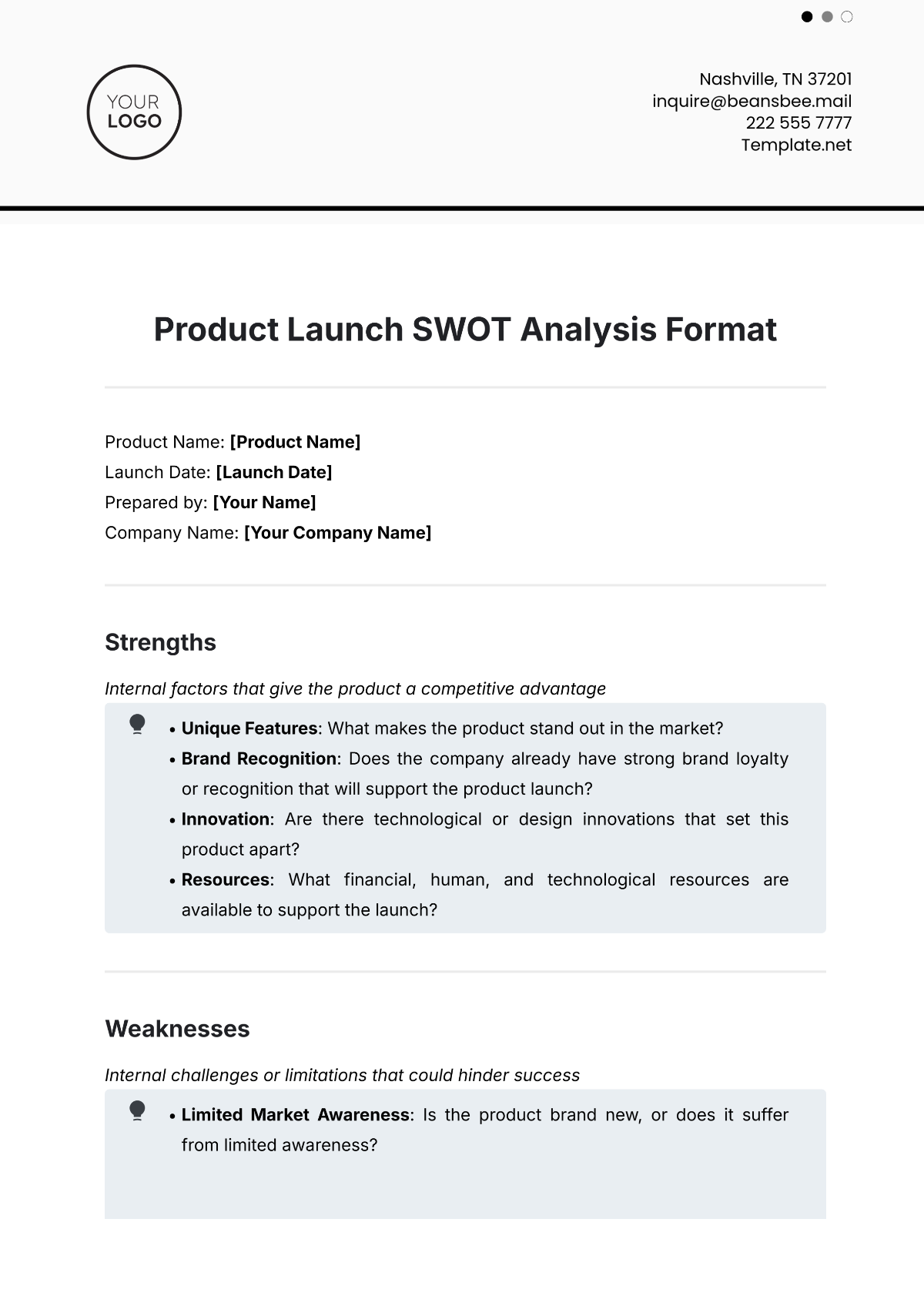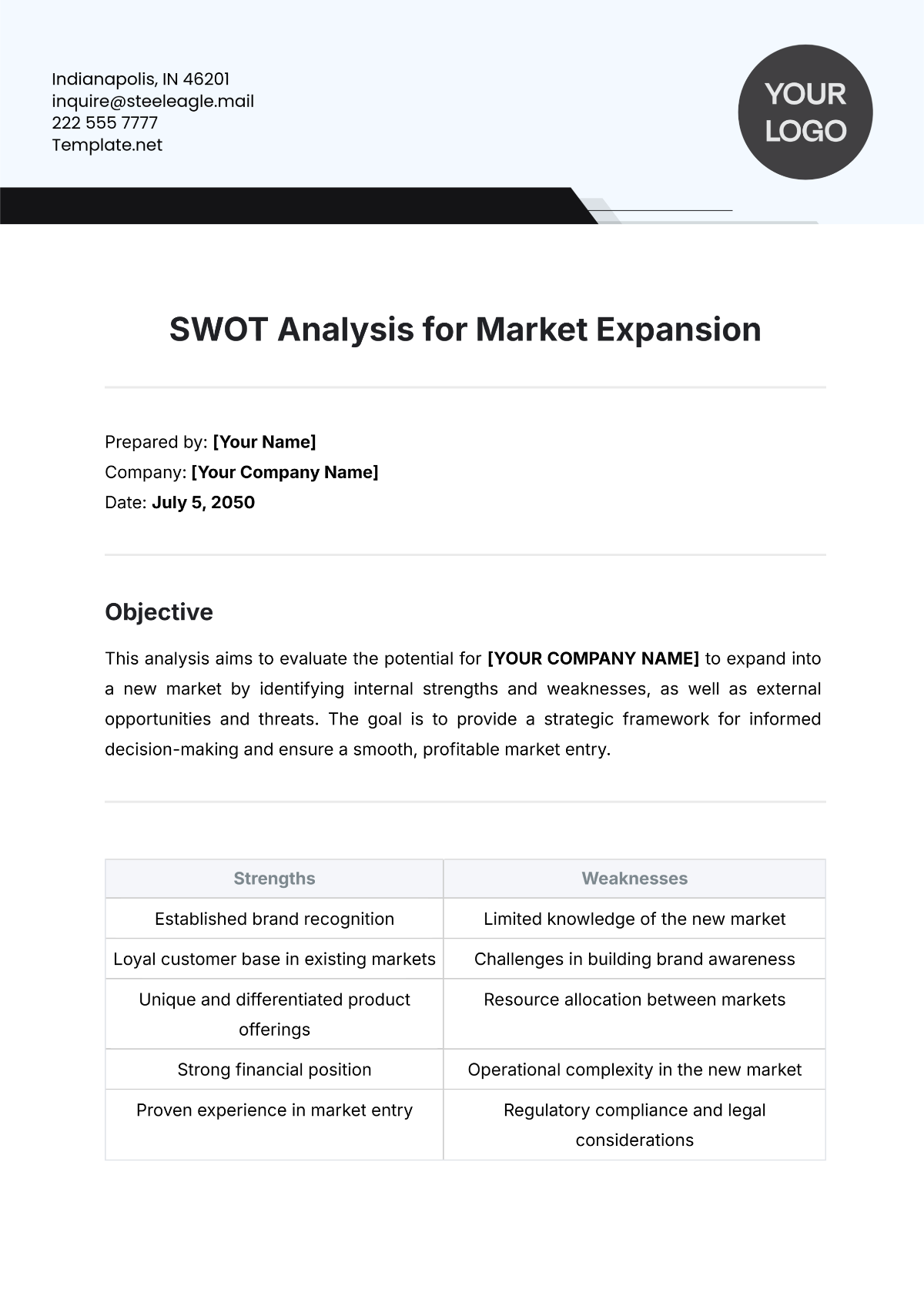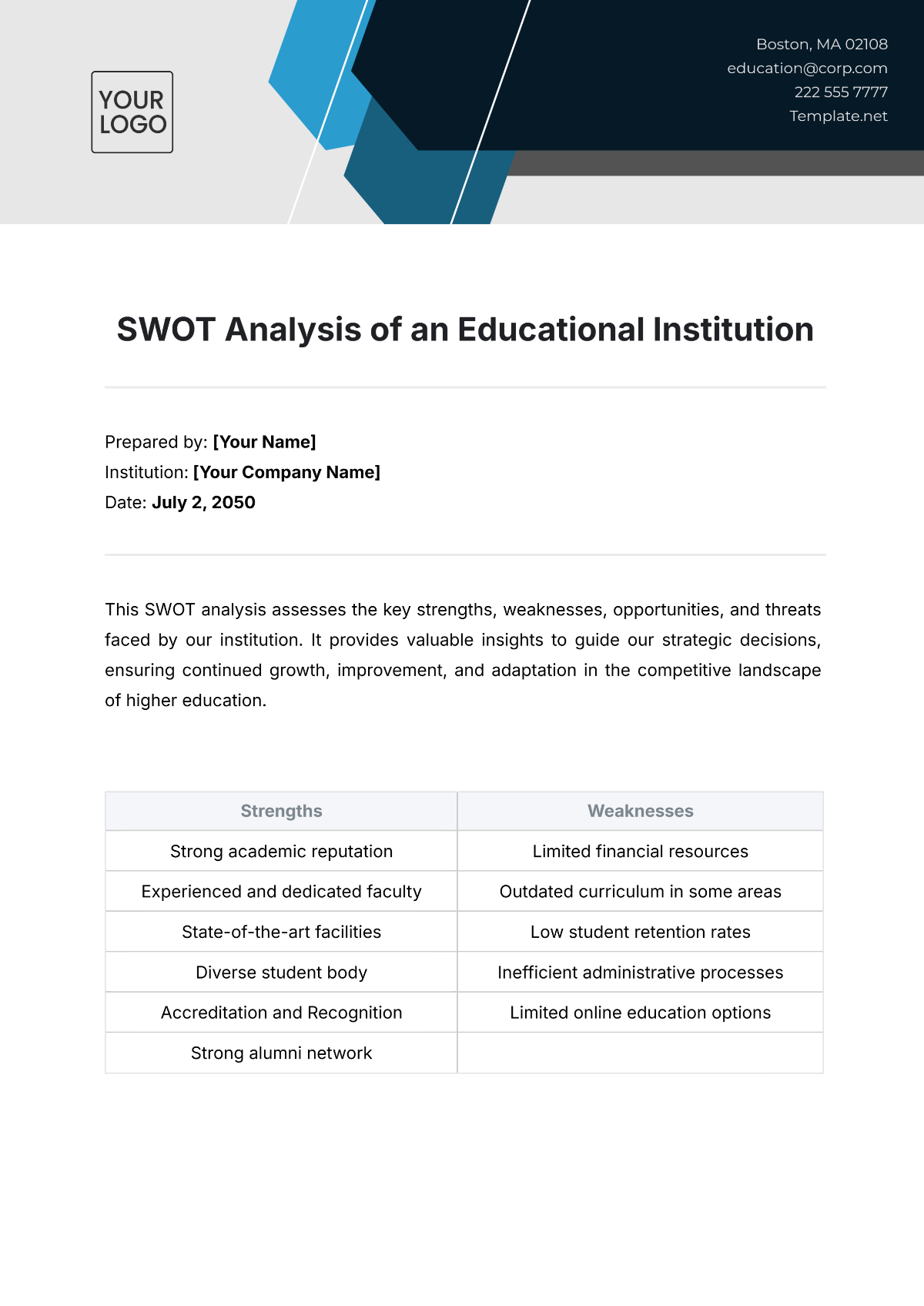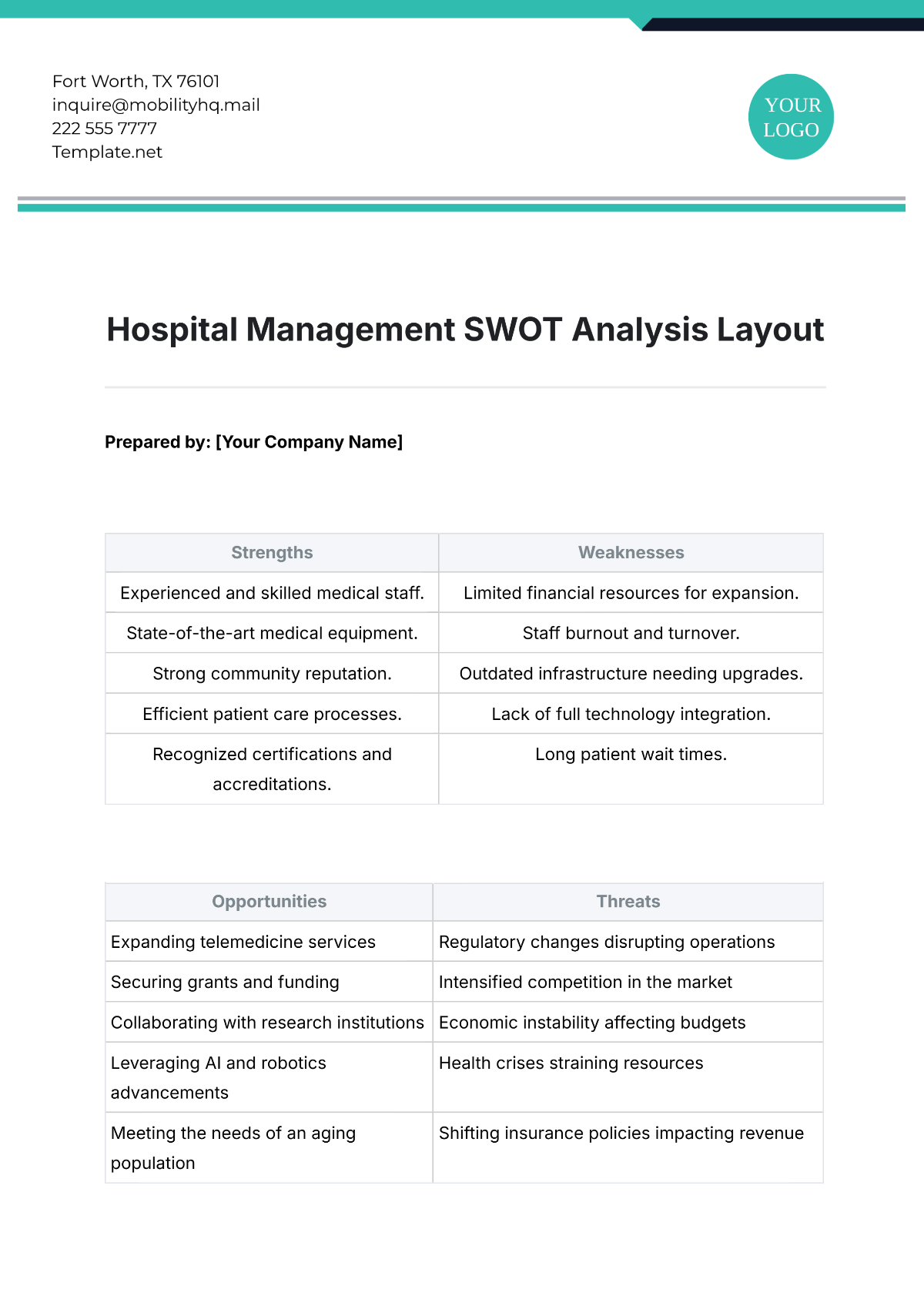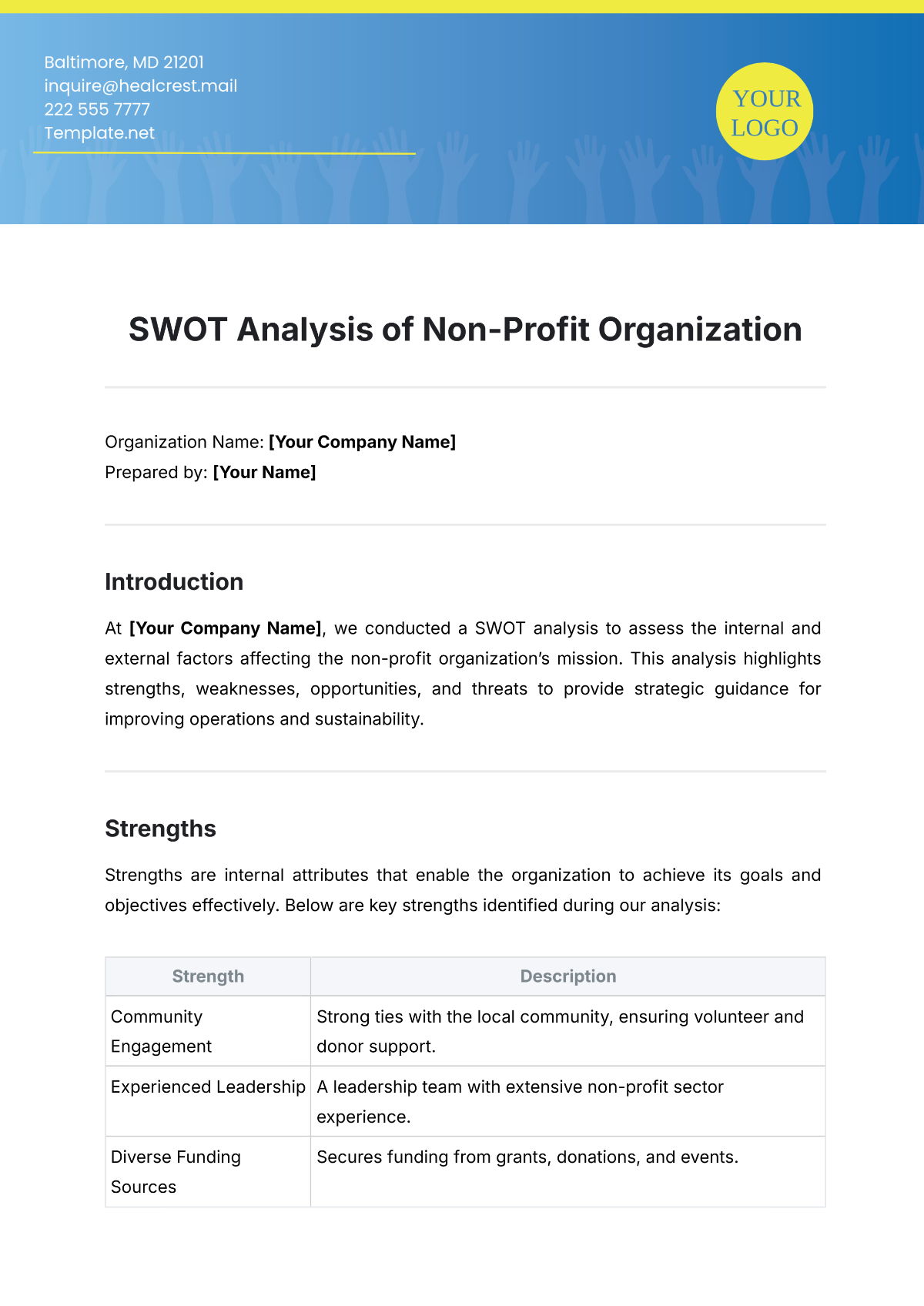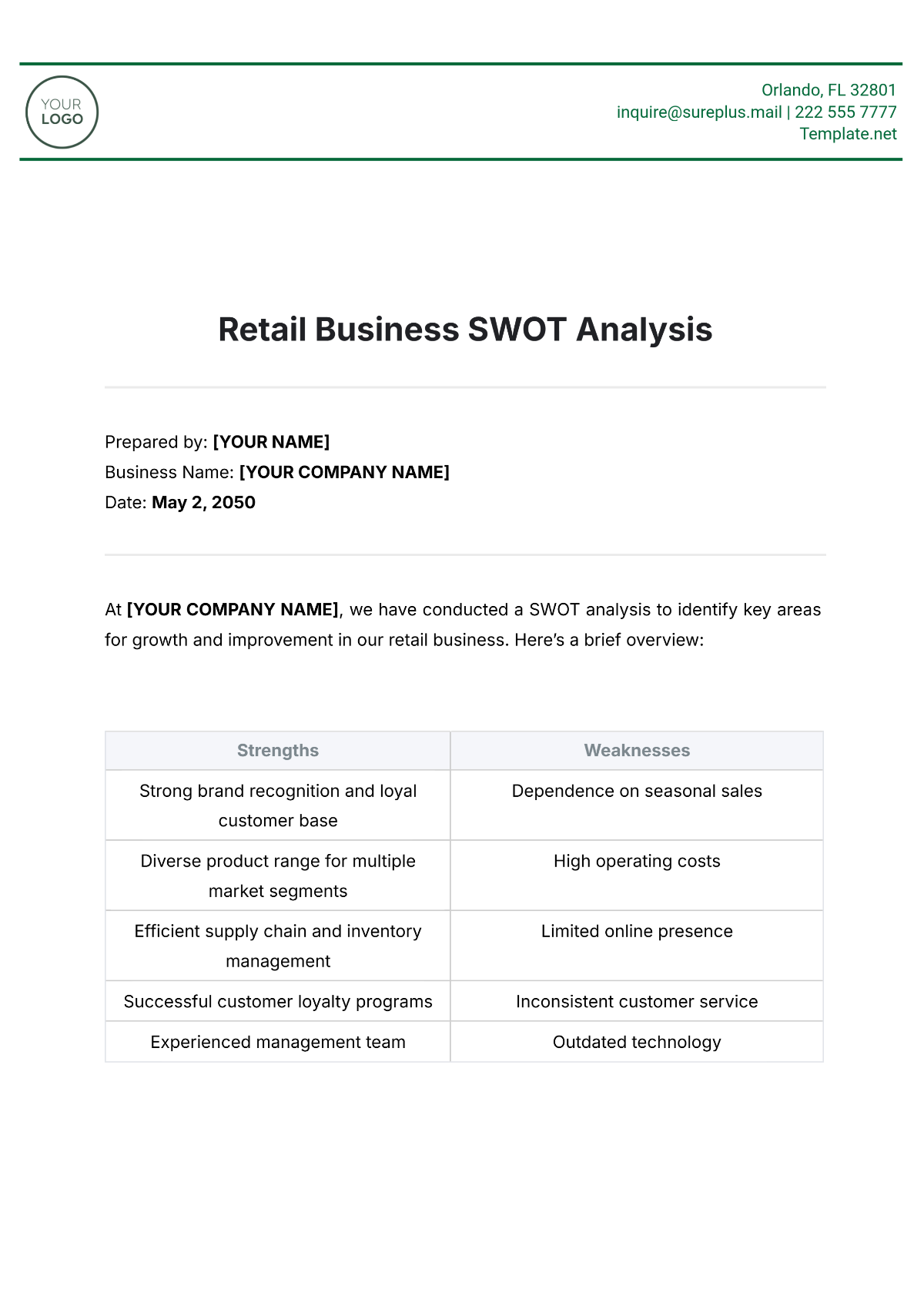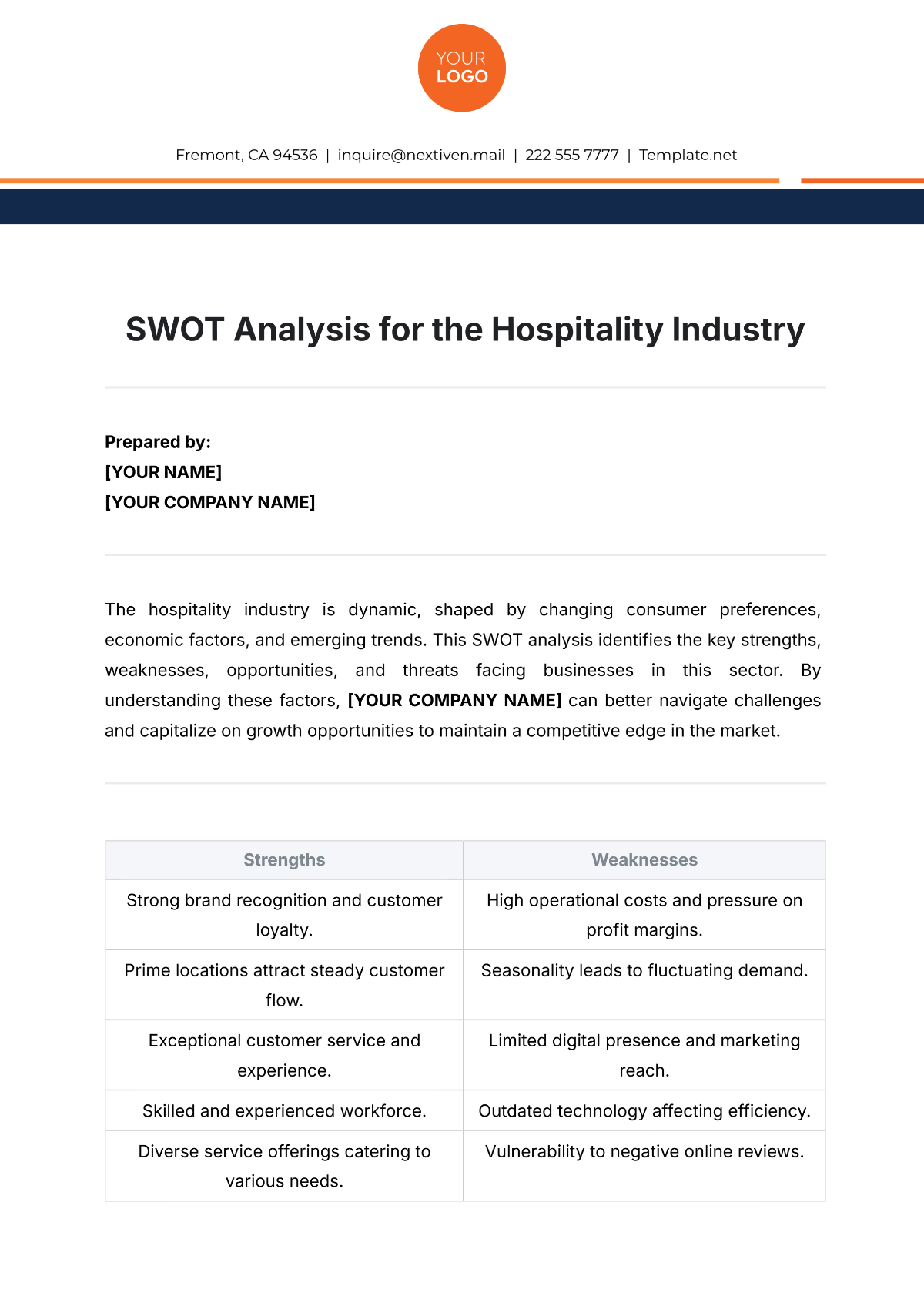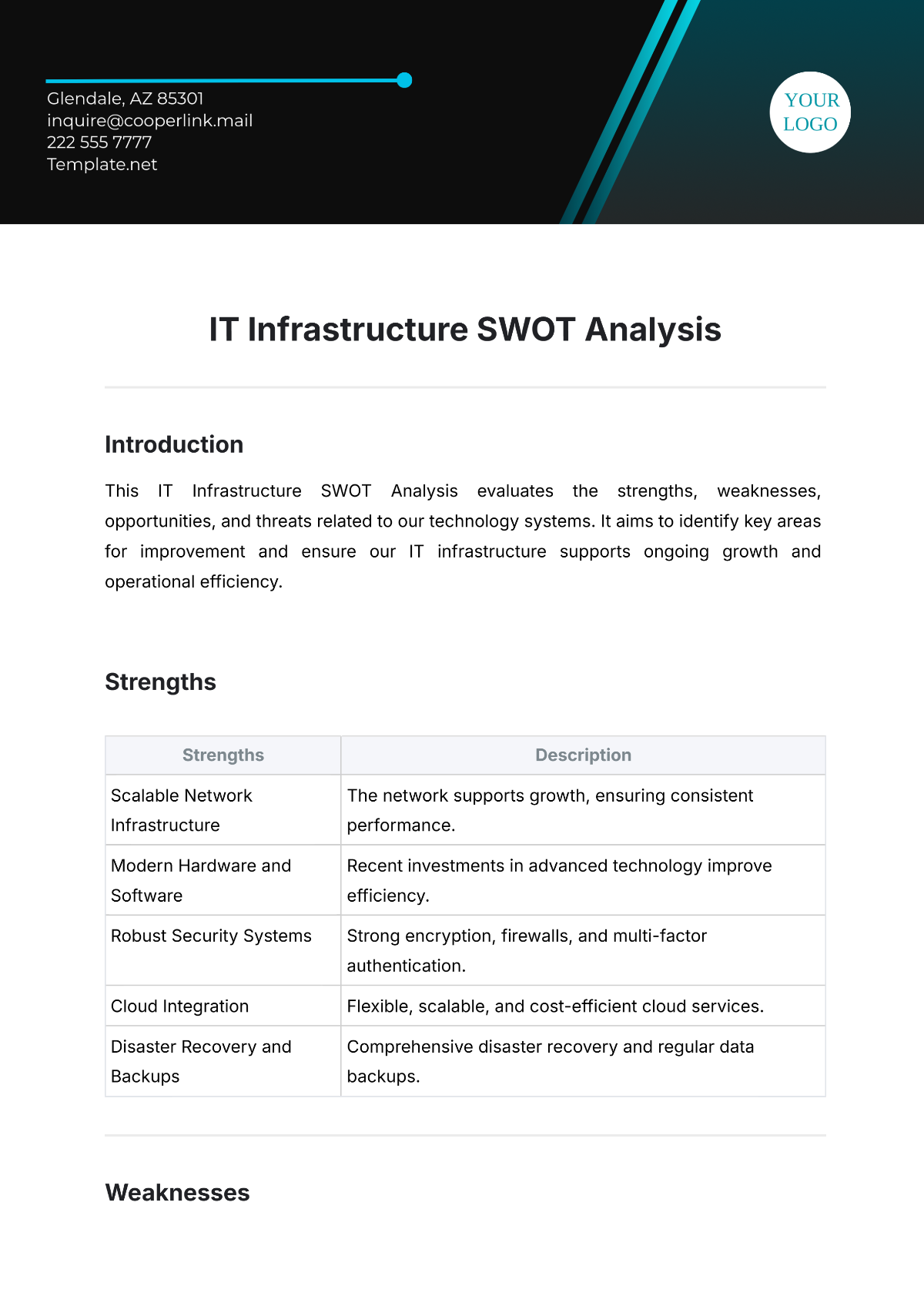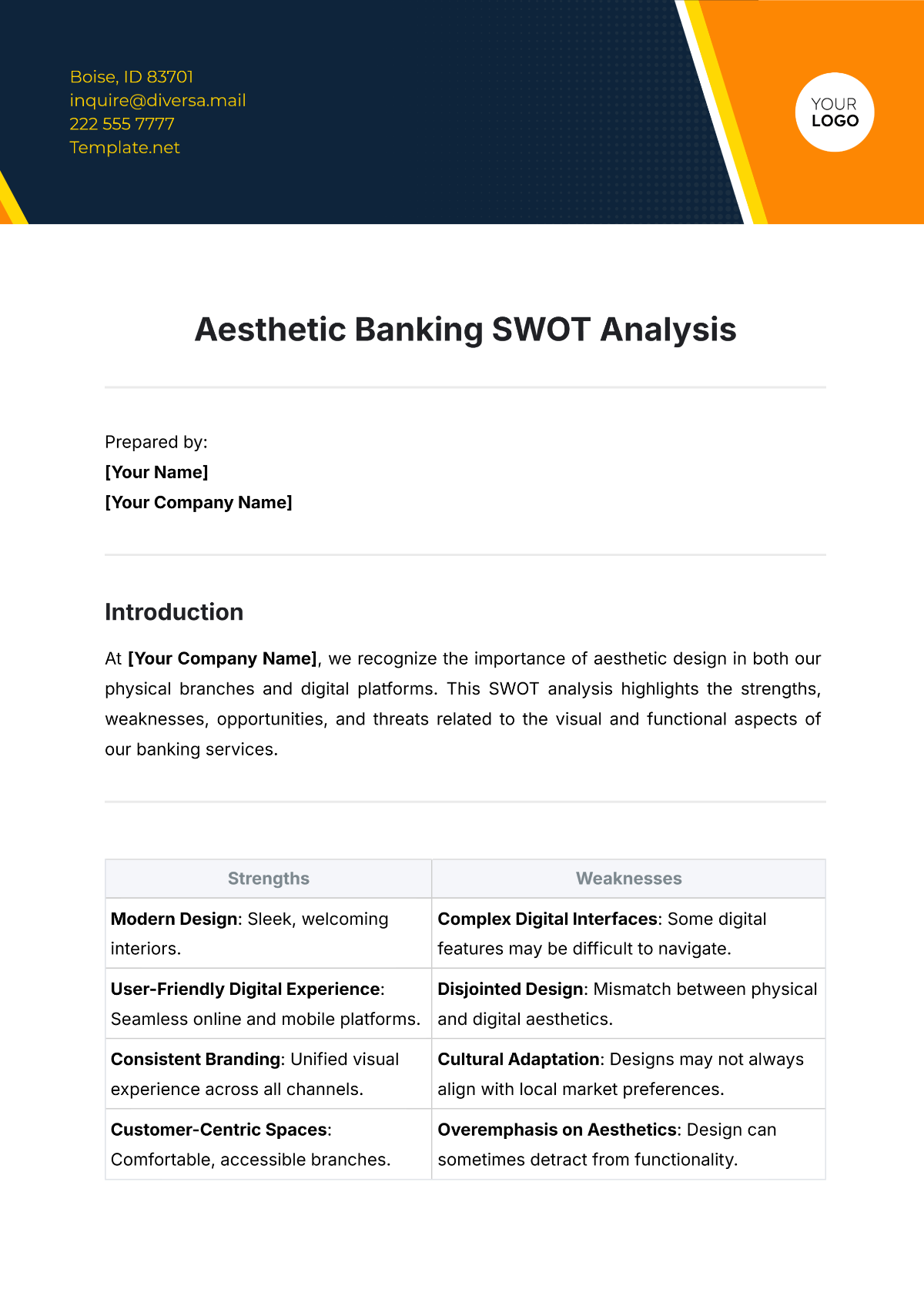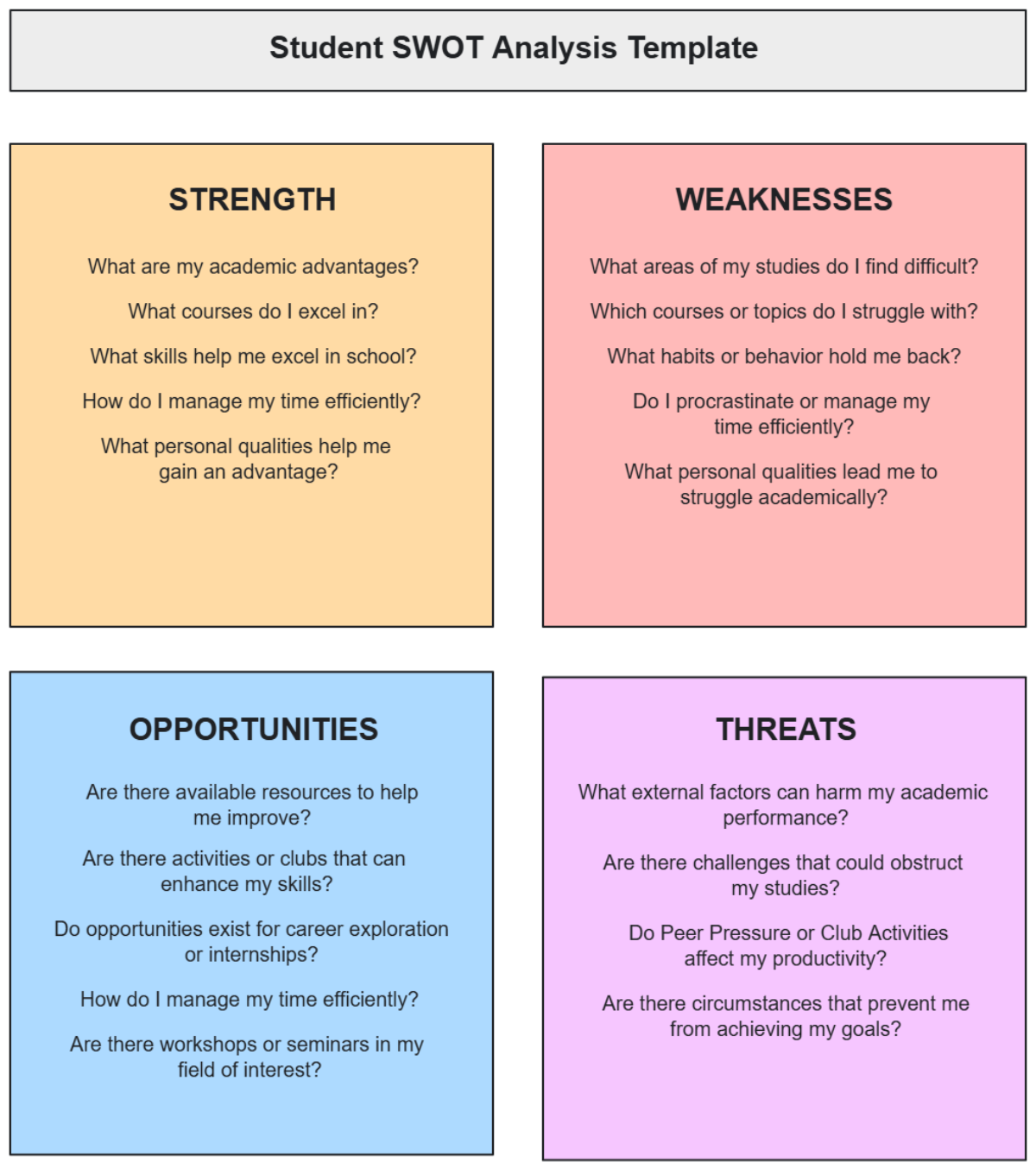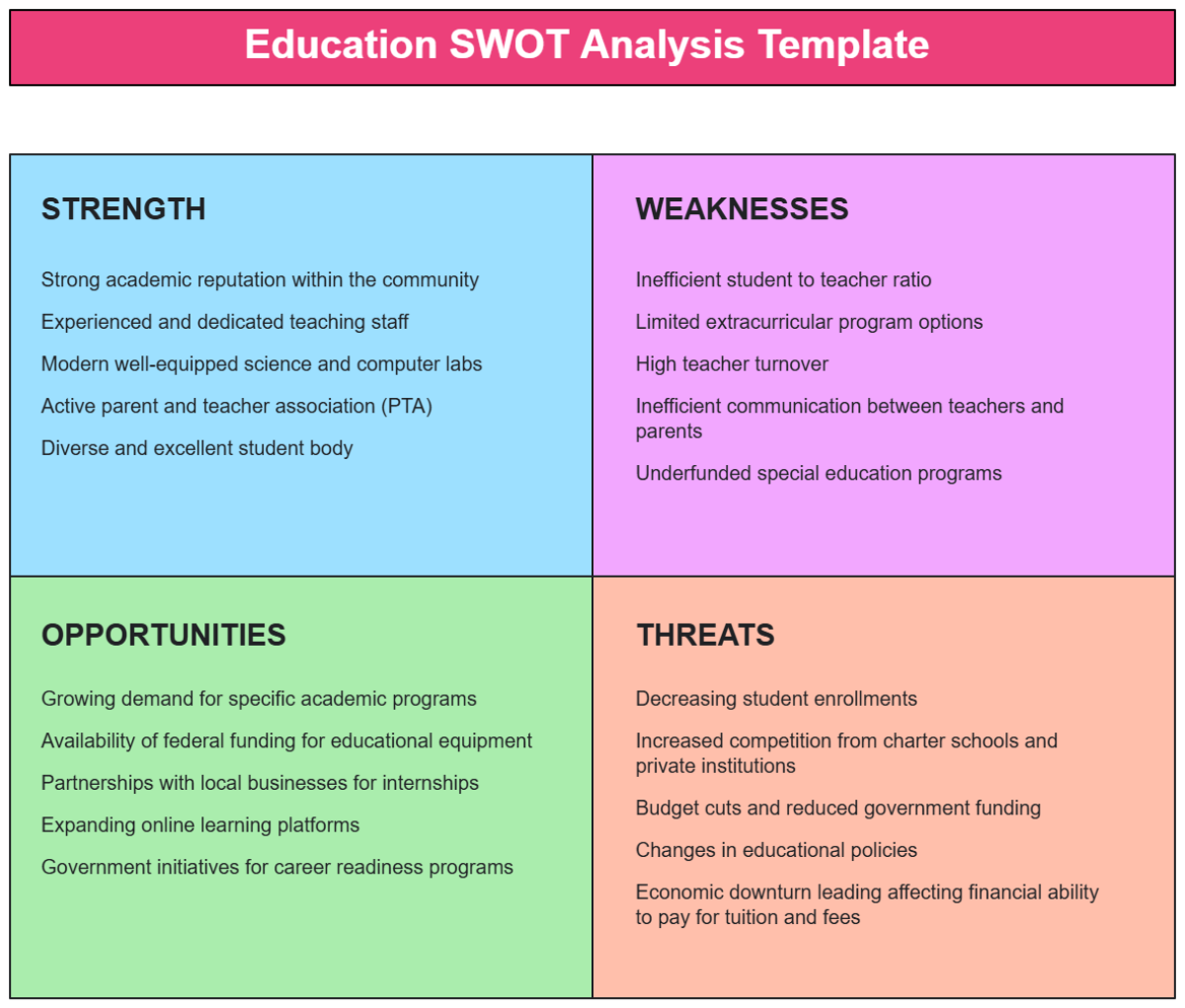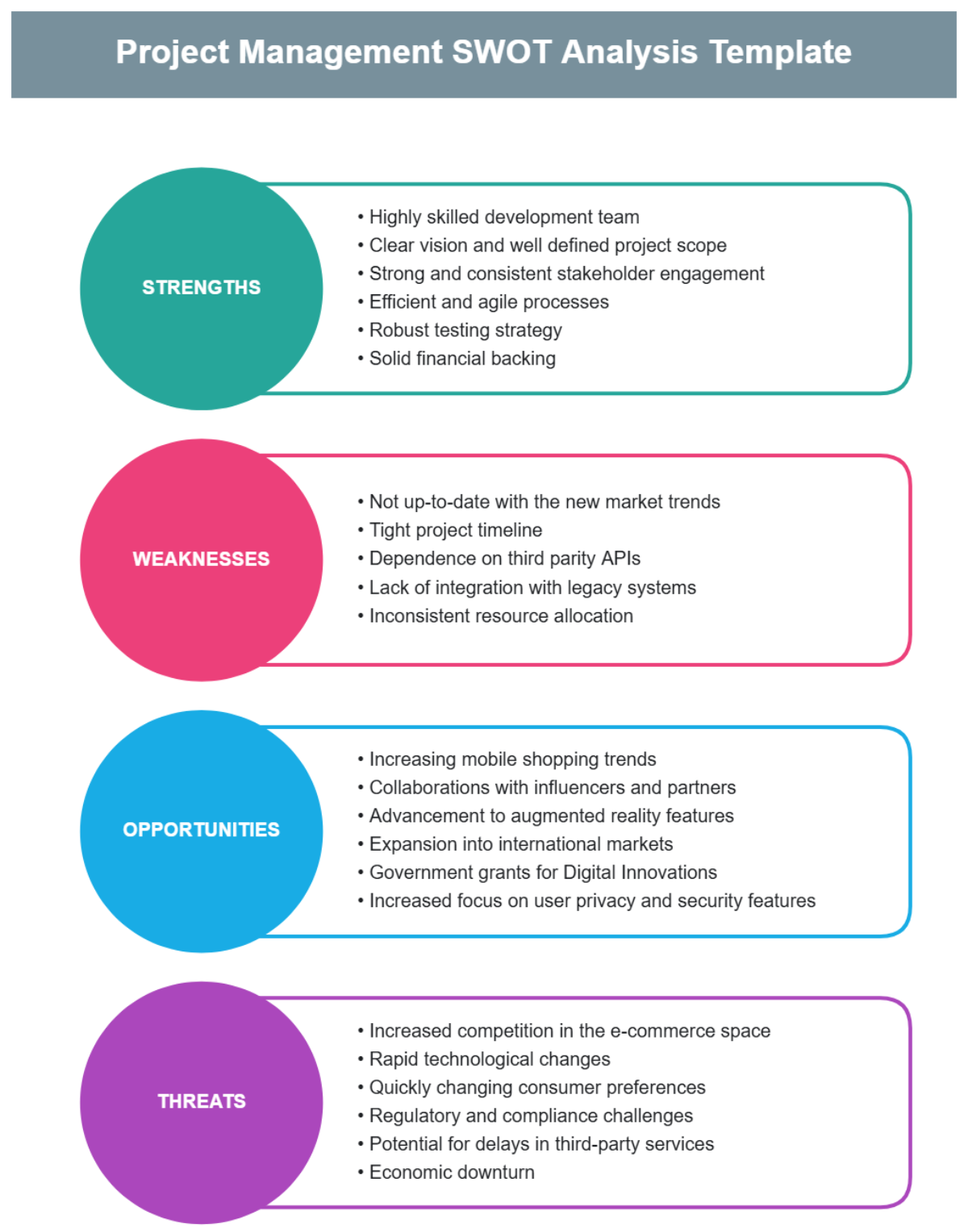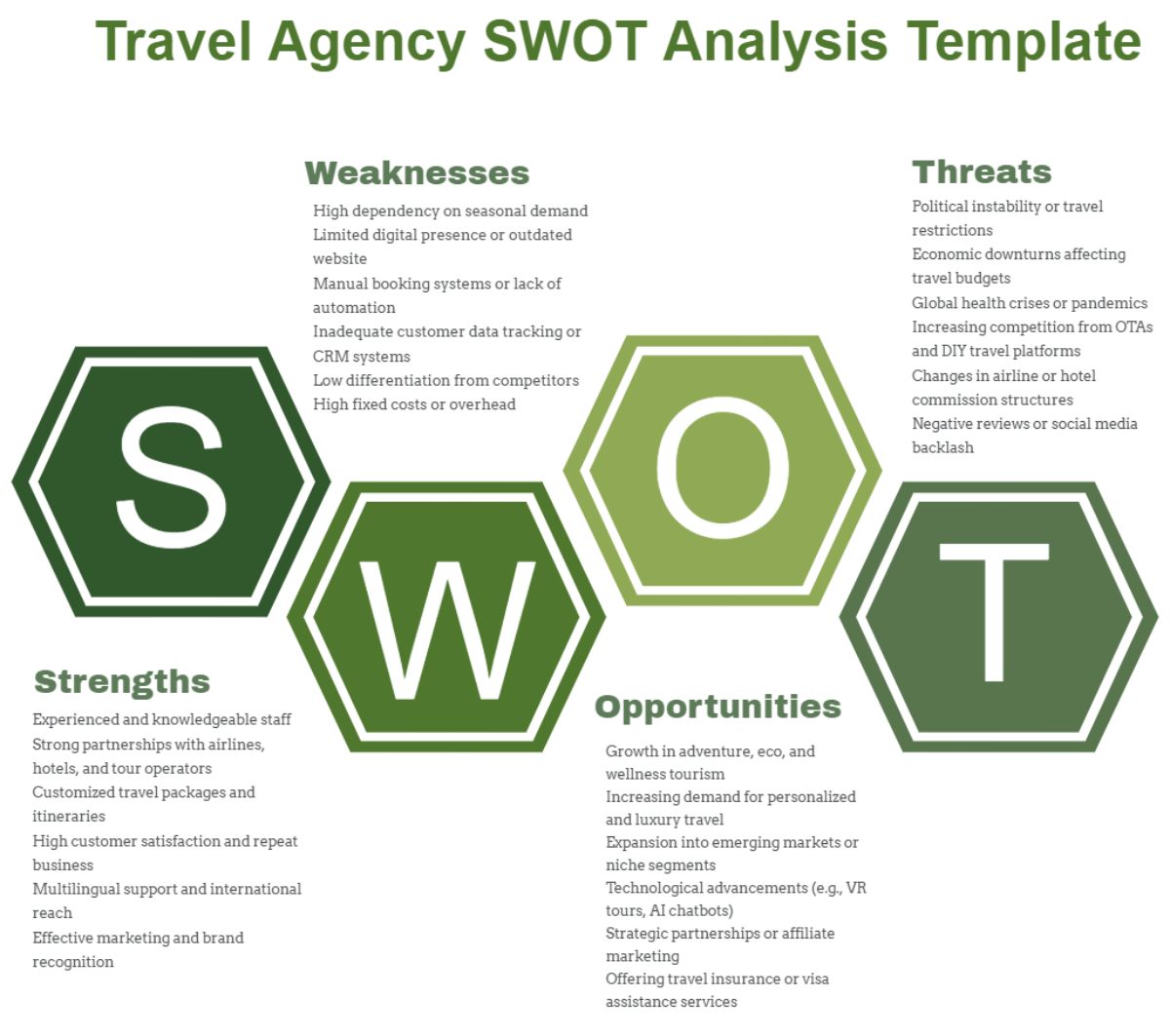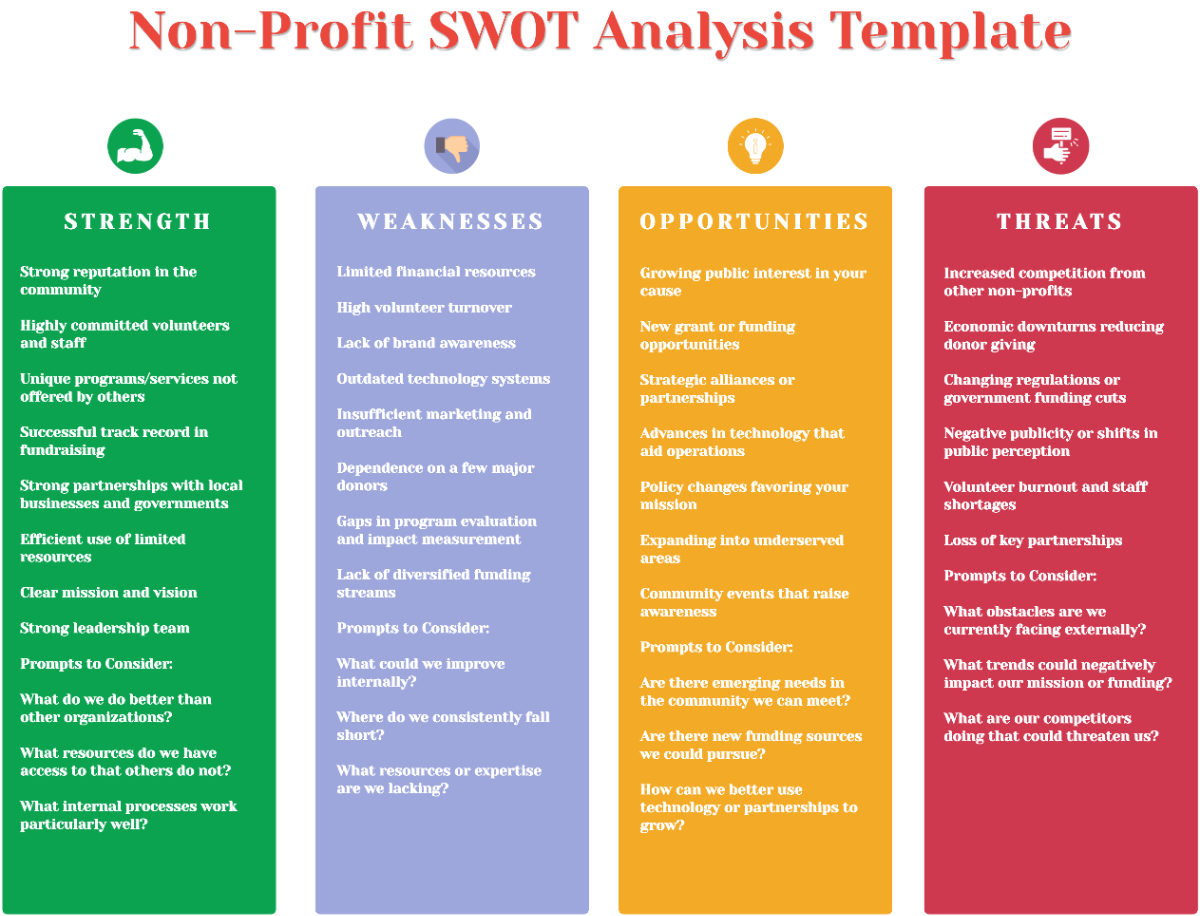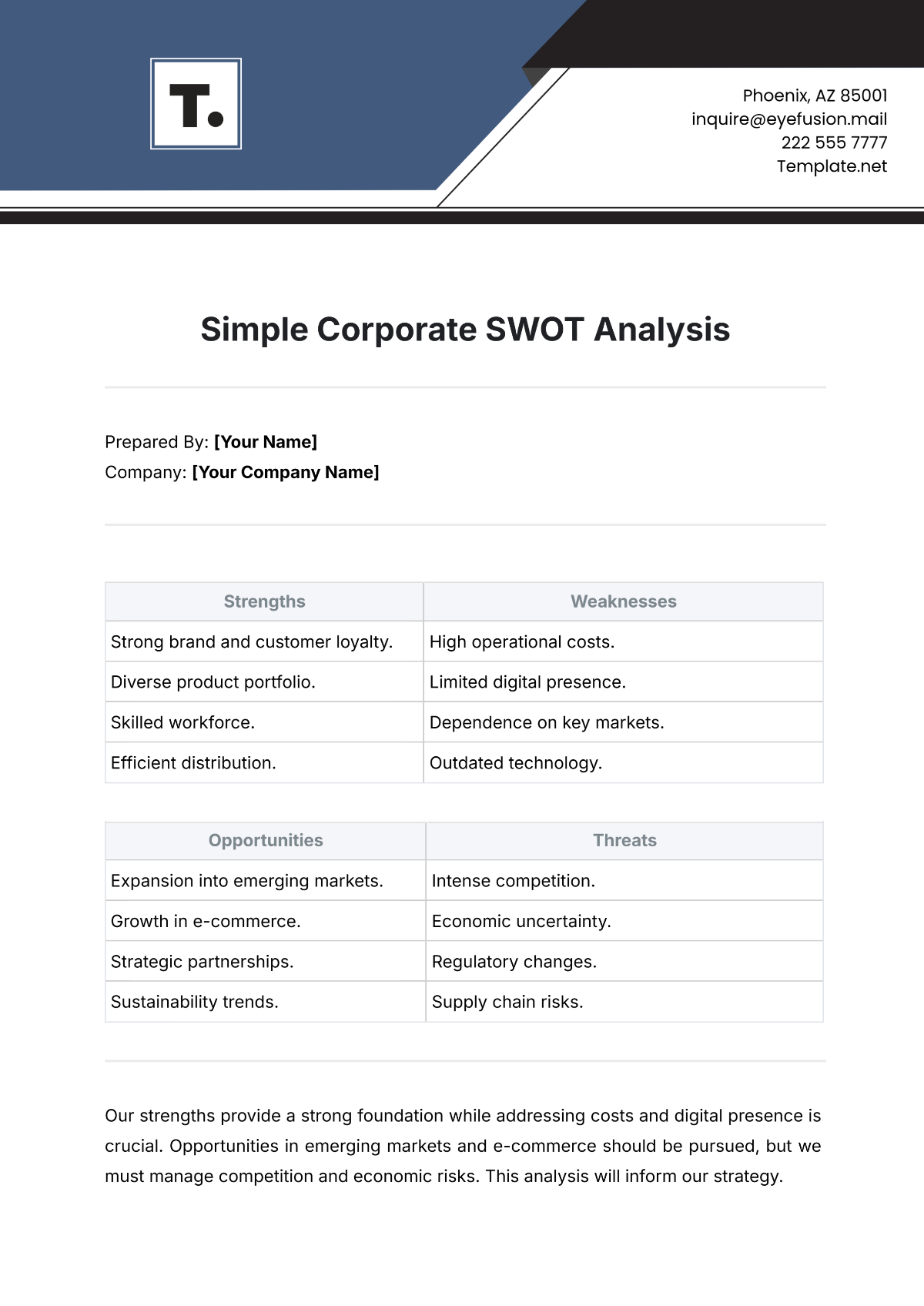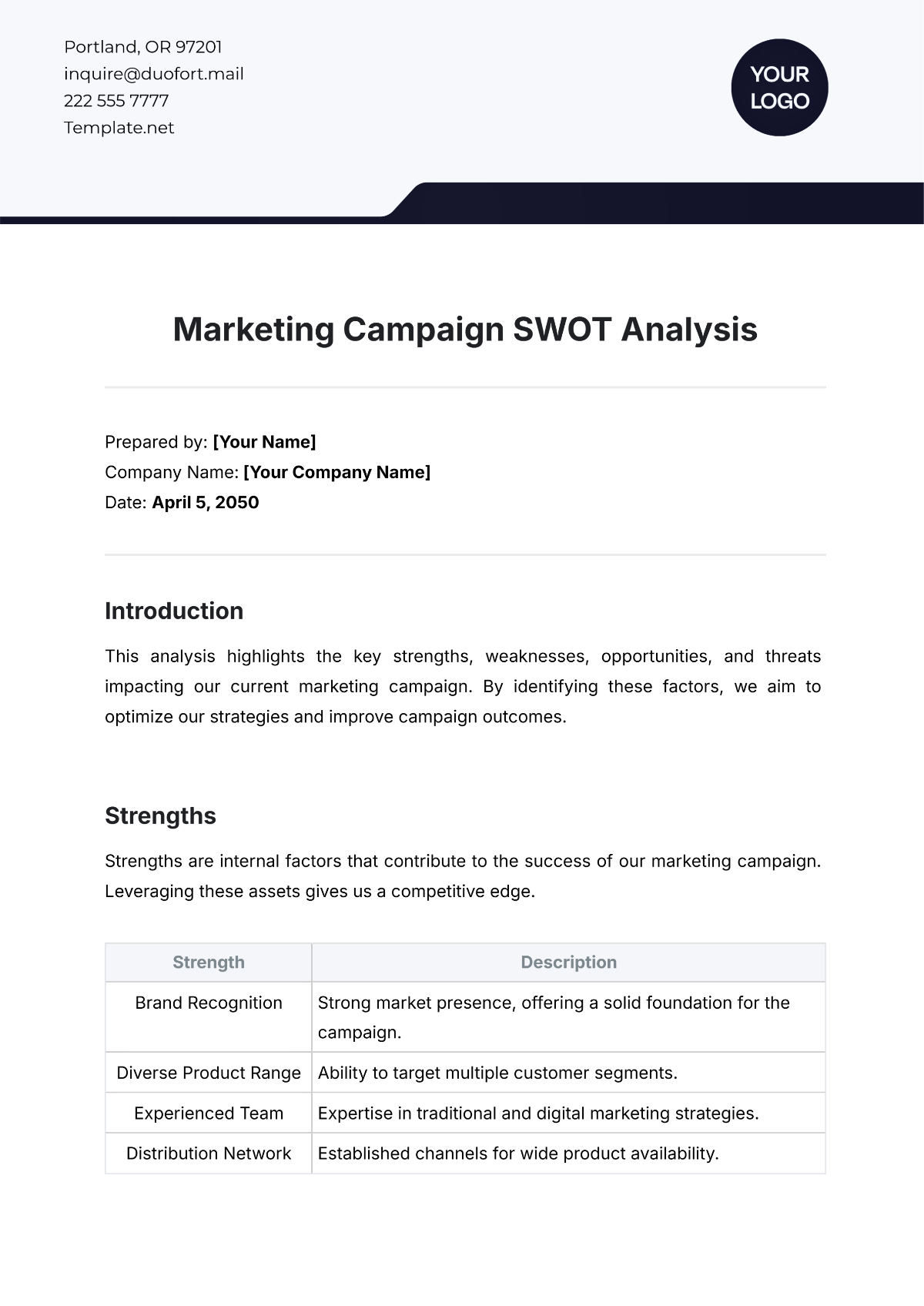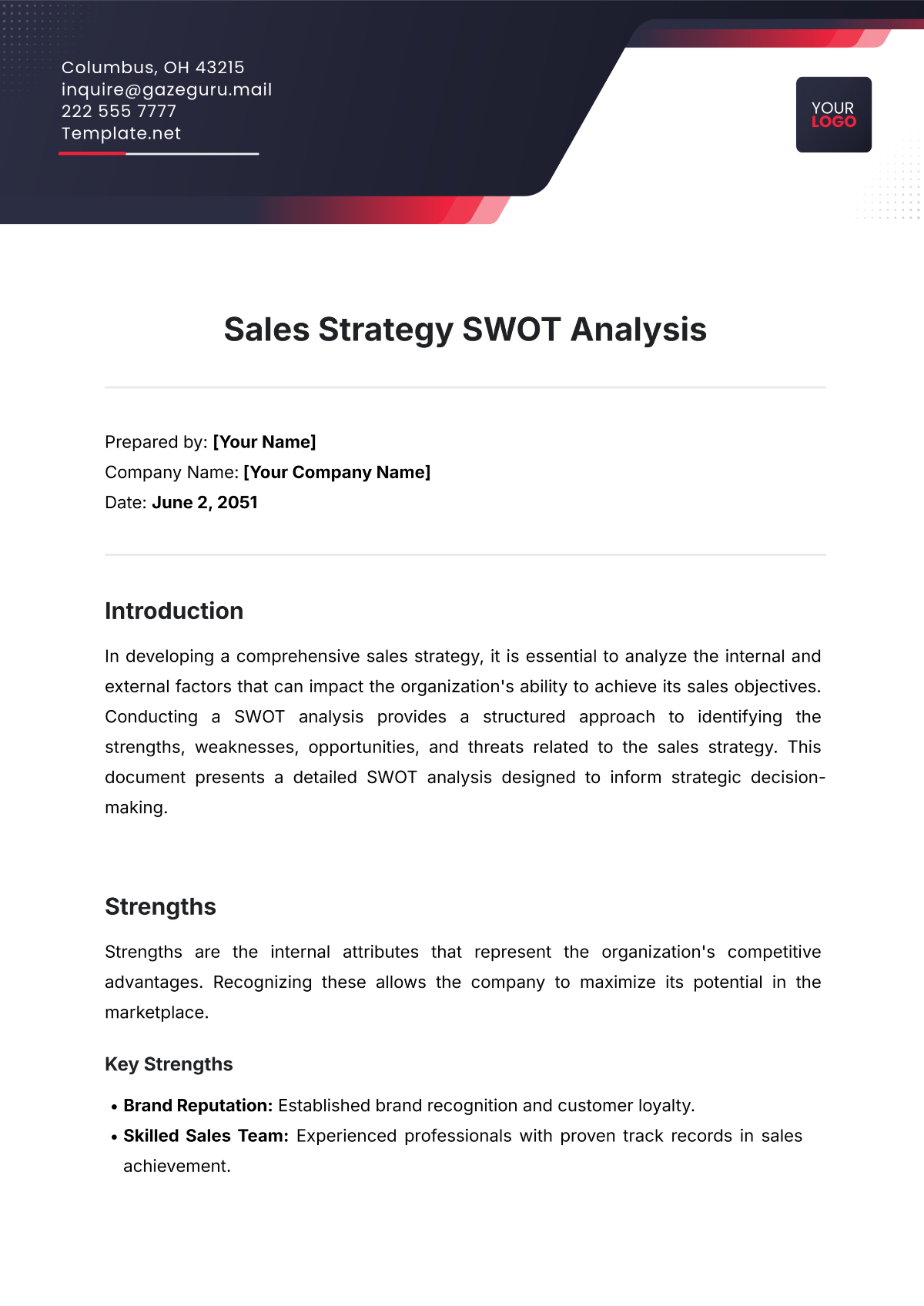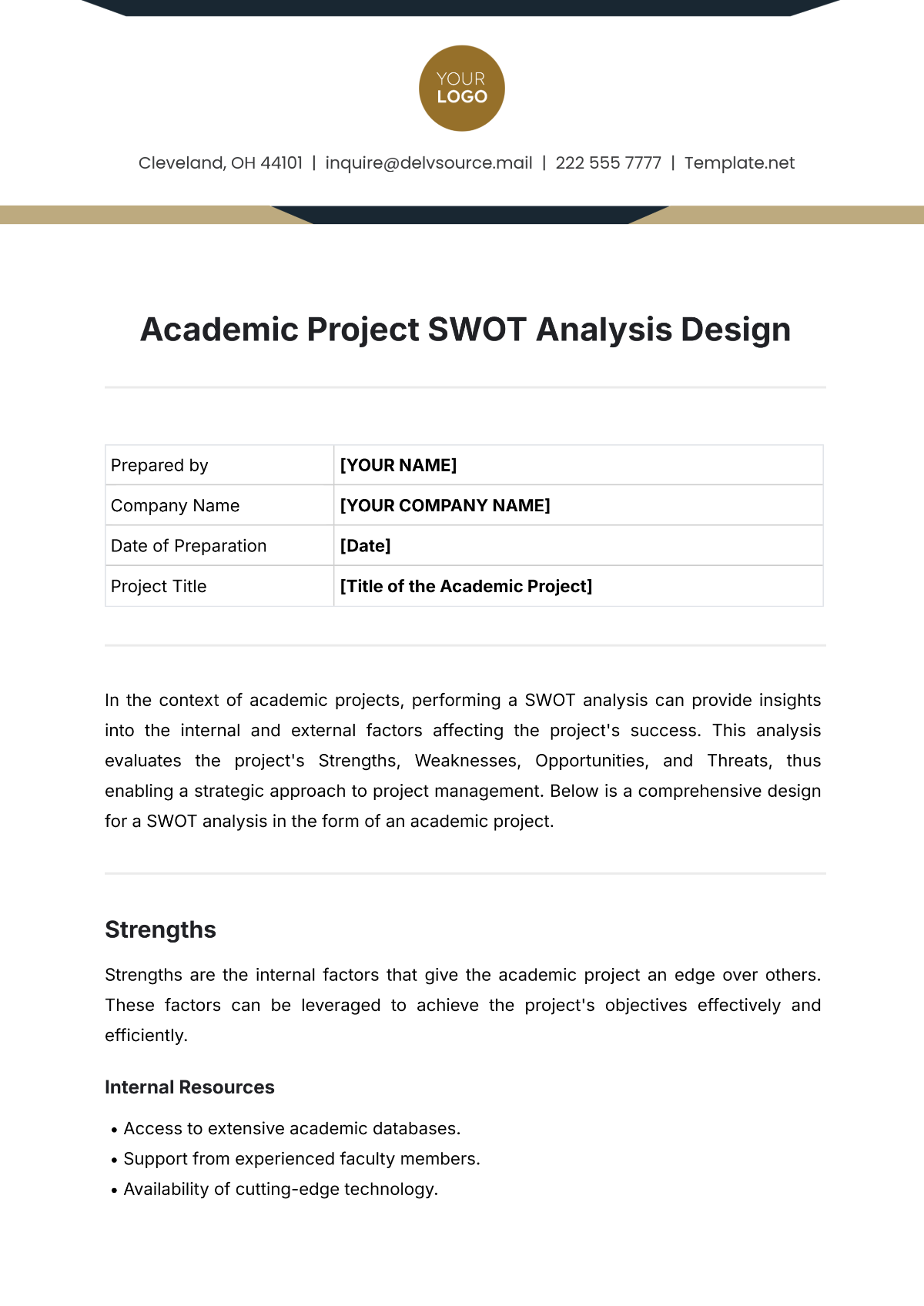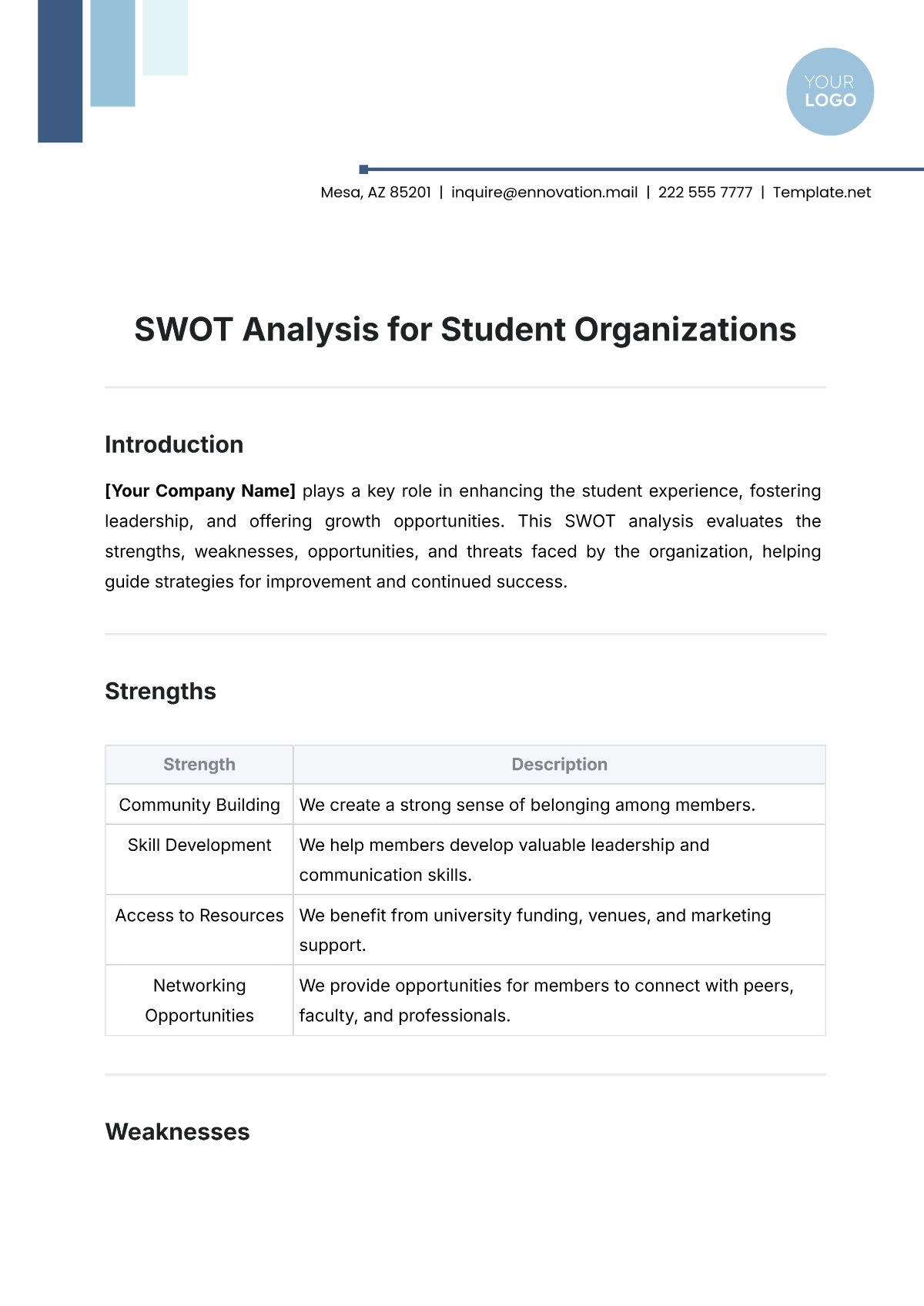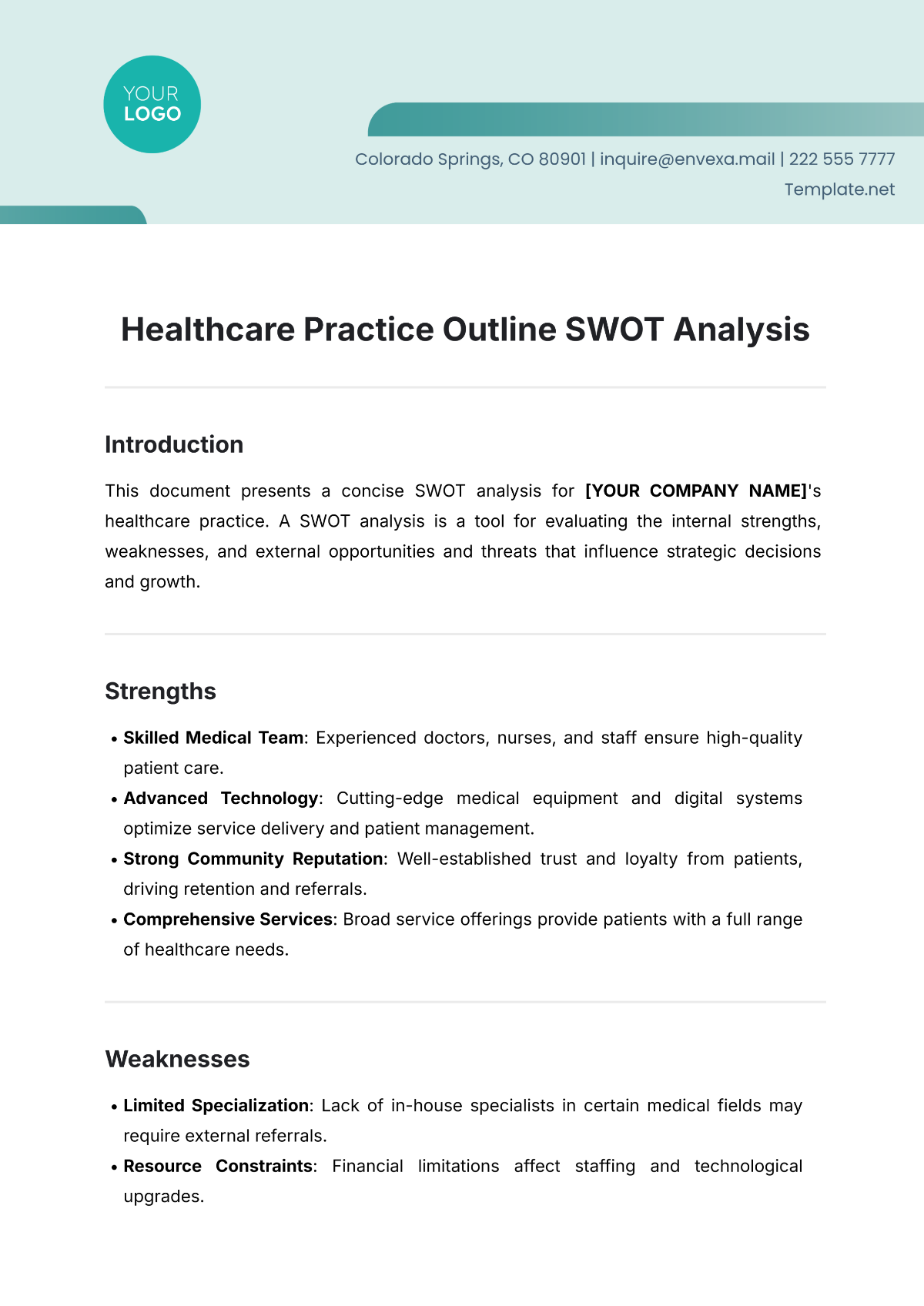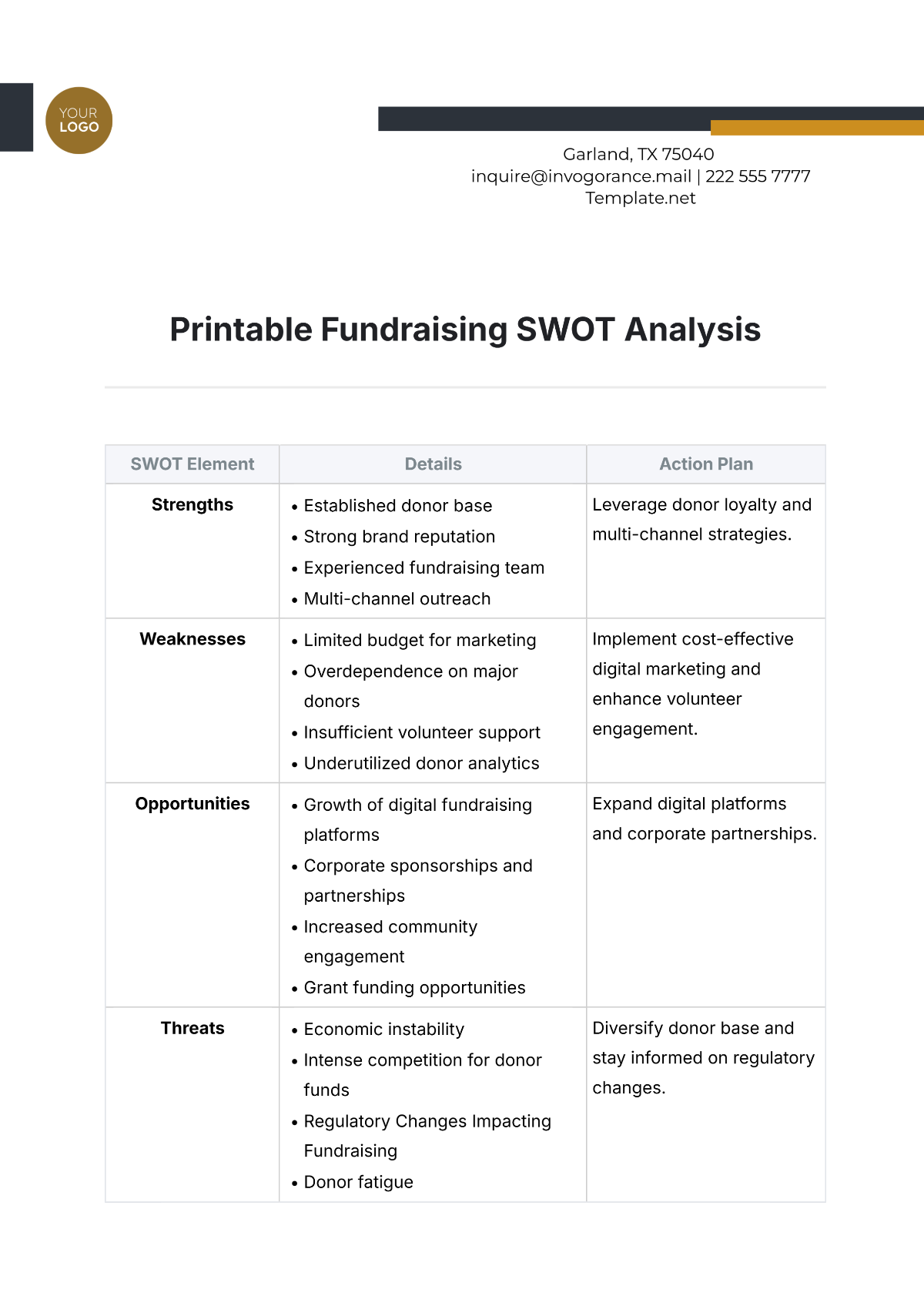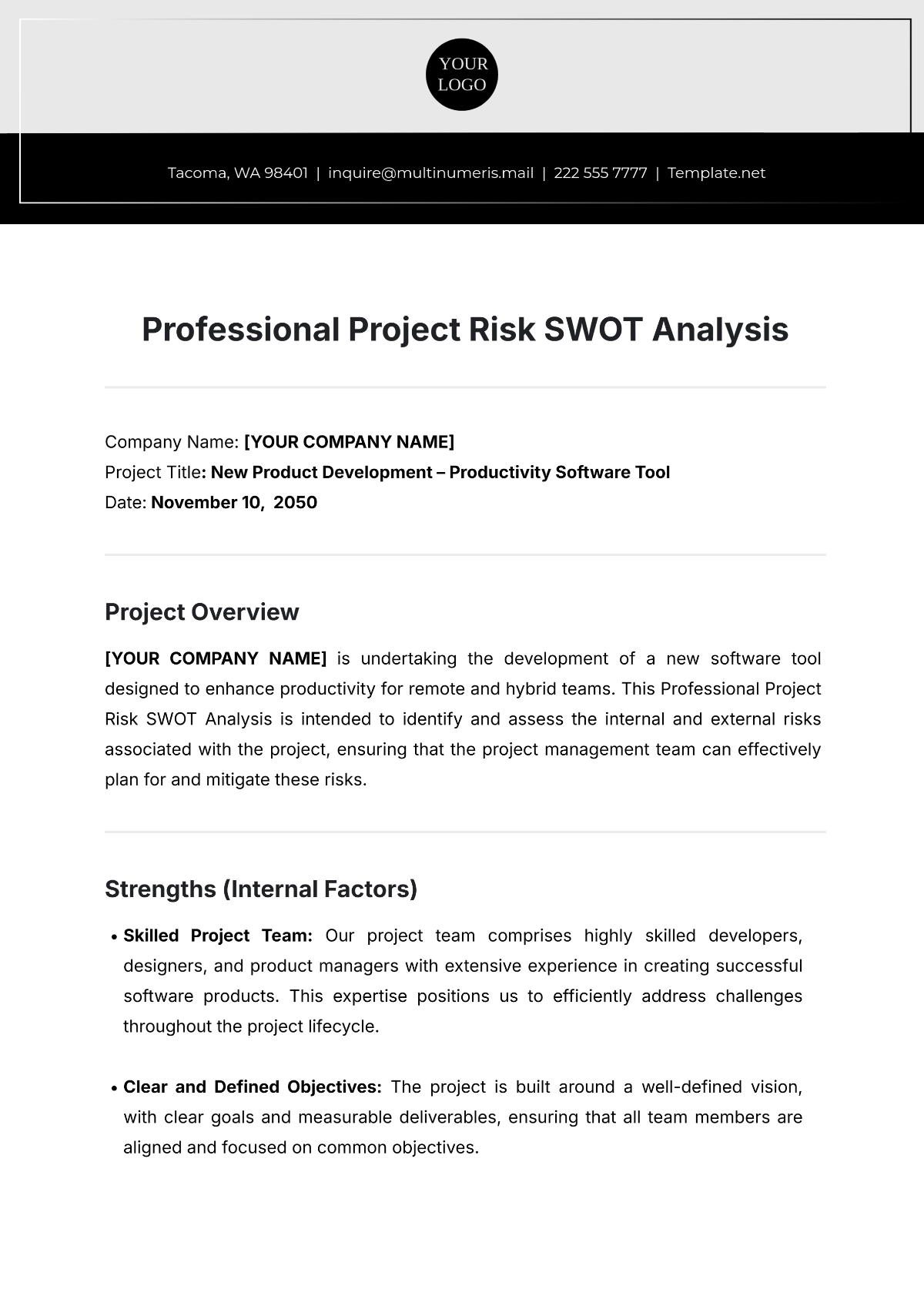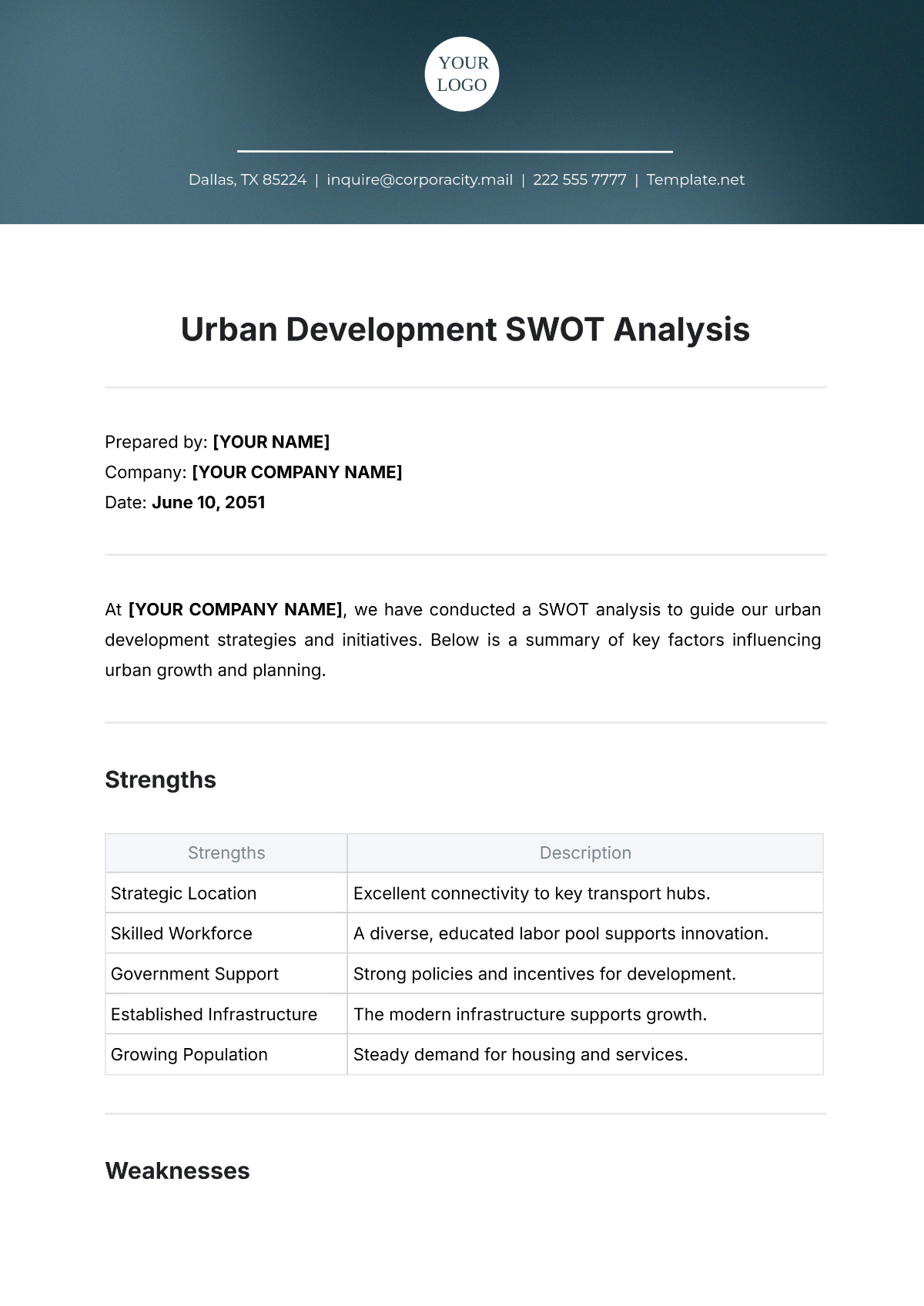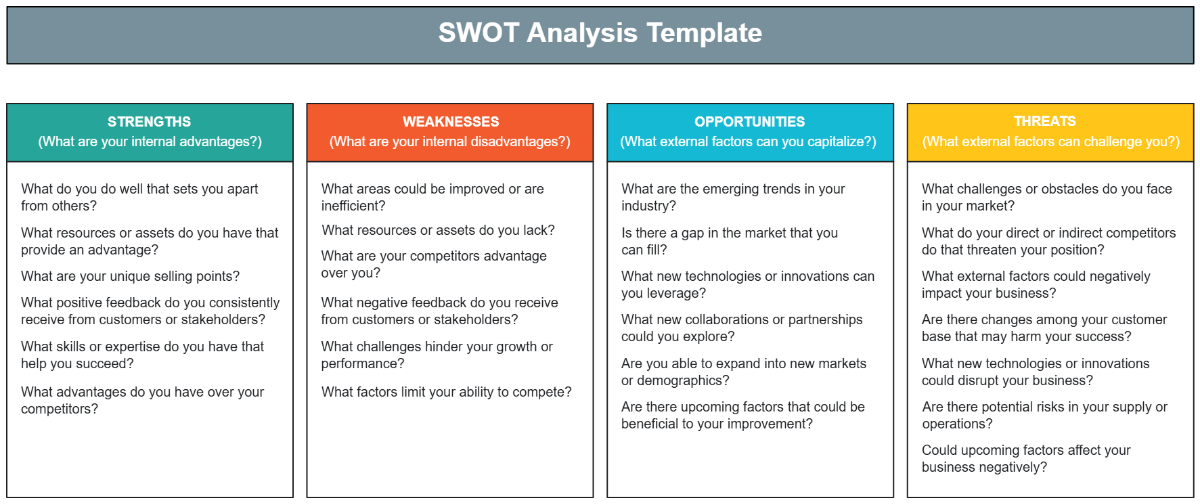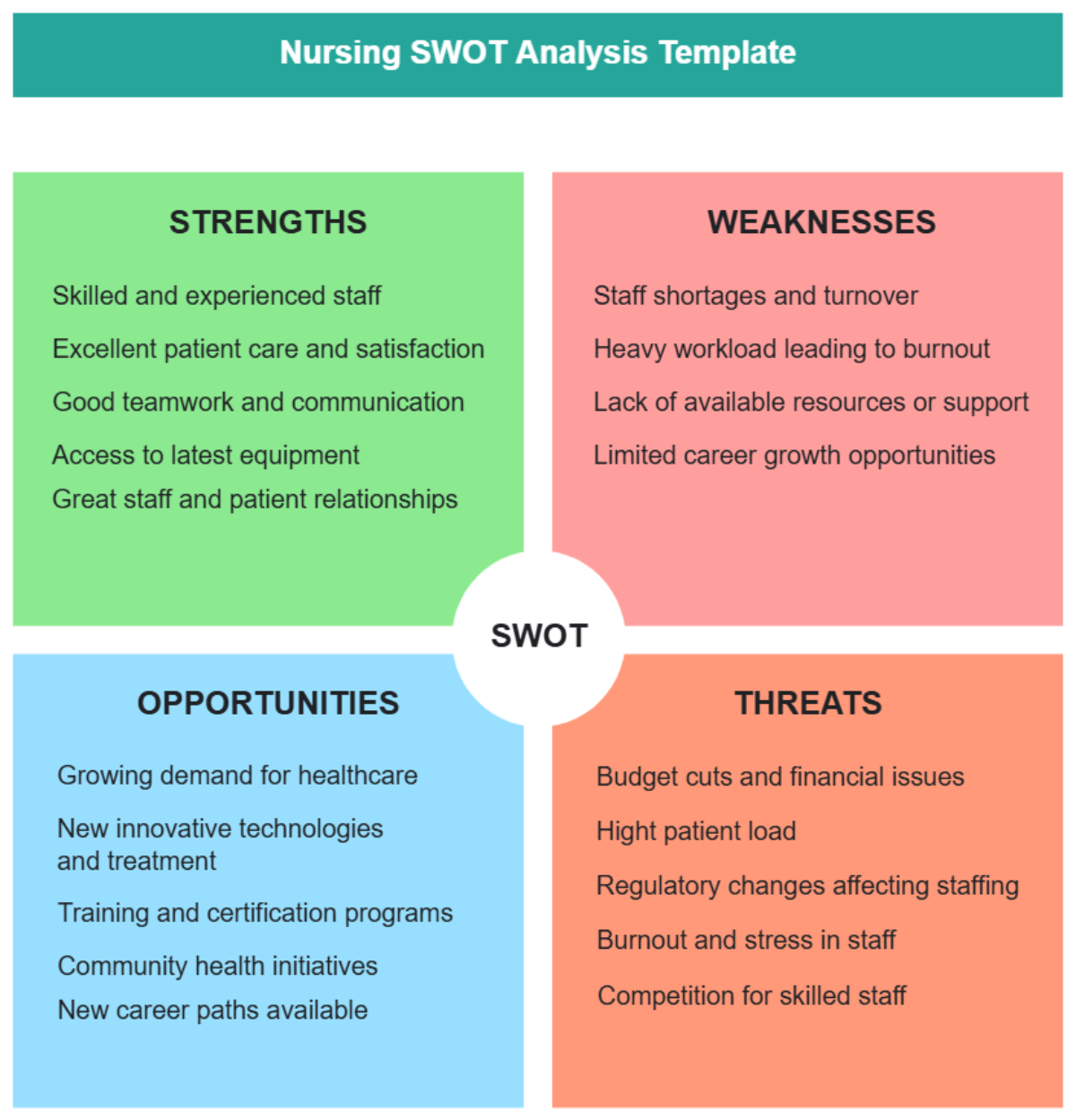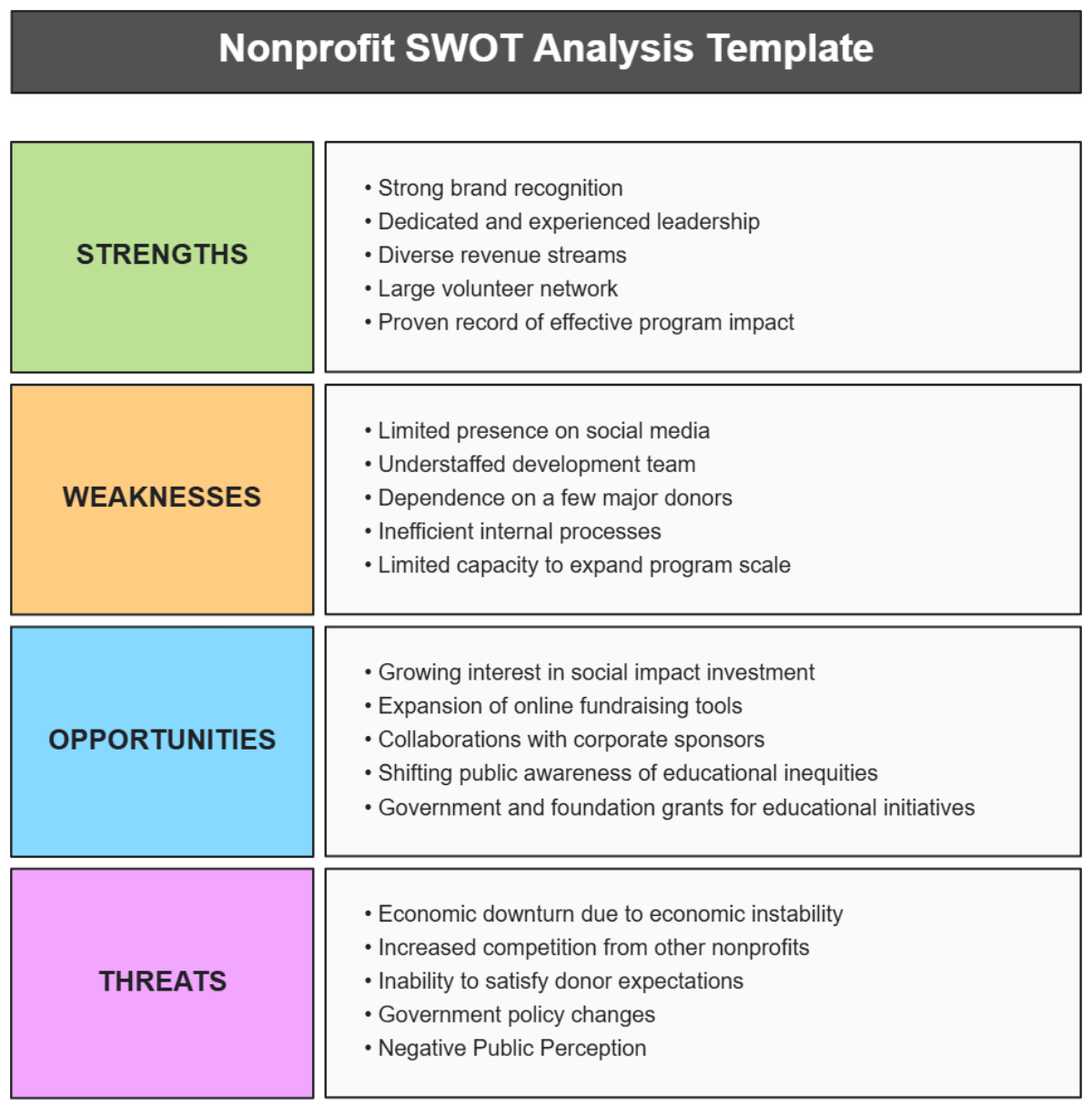SWOT Analysis For Human Resources
_____________________________________________________________________________________
Prepared by: | [Your Name] |
Company Email: | [Your Company Email] |
Company Address: | [Your Company Address] |
Company Website: | [Your Company Website] |
_____________________________________________________________________________________
I. INTRODUCTION
Purpose:
This SWOT analysis aims to provide an in-depth examination of the human resources (HR) capabilities and challenges of [Your Company Name].
Scope:
The analysis focuses on assessing the internal strengths and weaknesses of the HR department, as well as identifying external opportunities and threats relevant to its operations.
Methodology:
The analysis was conducted through a combination of internal assessments, stakeholder interviews, and industry benchmarking to gain comprehensive insights into the HR landscape of [Your Company Name].
II. STRENGTHS
Experienced HR Leadership Team:
Seasoned professionals driving strategic HR initiatives.
Expertise in navigating complex HR challenges and fostering organizational growth.
Robust Training and Development Programs:
Tailored programs to nurture employee skills and competencies.
Continuous learning culture enhancing workforce capabilities and adaptability.
Effective Employee Retention Strategies:
Implementation of retention incentives and recognition programs.
Focus on career development and growth opportunities within the organization.
Strong Workplace Culture and Employee Engagement:
Cultivation of a positive work environment fostering collaboration and innovation.
High levels of employee satisfaction and engagement contributing to productivity.
III. WEAKNESSES
Limited HR Technology and Automation:
Insufficient investment in modern HR systems and tools.
Manual processes leading to inefficiencies and data management challenges.
Resource Constraints:
Limited budget allocation hindering HR initiatives and programs.
Inadequate staffing levels impacting service delivery and responsiveness.
Gaps in Compliance and Regulatory Knowledge:
Lack of comprehensive understanding of evolving labor laws and regulations.
Risk of non-compliance leading to legal and reputational repercussions.
Suboptimal Talent Acquisition Processes:
Inefficient recruitment methods resulting in prolonged hiring cycles.
Difficulty in attracting top talent due to outdated practices.
IV. OPPORTUNITIES
Advancements in HR Technologies:
Adoption of cutting-edge HR software for streamlined processes and data analytics.
Integration of AI and machine learning to enhance decision-making and predictive analytics.
Strategic Partnerships with Educational Institutions:
Collaboration with universities and vocational schools for talent pipeline development.
Sponsorship of educational programs to attract and retain skilled graduates.
Diversity Expansion and Inclusion Programs:
Embracing diversity initiatives to tap into a broader talent pool.
Creating an inclusive workplace culture to drive innovation and creativity.
New Labor Market Segments:
Exploration of emerging talent markets and niche skill sets.
Flexibility in hiring practices to adapt to changing workforce demographics.
V. THREATS
Changing Regulatory Environments:
Rapidly evolving labor laws and compliance standards.
Risk of penalties and litigation for non-compliance with regulatory requirements.
Intense Competition for Skilled Talent:
Talent shortages in critical areas leading to fierce competition among employers.
Difficulty in attracting and retaining top performers amidst talent wars.
Economic Downturns Affecting Talent Retention:
Budget cuts and downsizing impacting employee morale and engagement.
Increased job insecurity leading to turnover and talent flight.
Cultural Misalignment Due to Globalization:
Clash of cultural values and work practices in multinational environments.
Challenges in fostering a cohesive organizational culture across diverse geographies.
VI. RECOMMENDATION FOR IMPROVEMENT
Invest in Upgrading HR Technology and Infrastructure:
Allocate resources for the implementation of modern HR systems and automation tools.
Enhance data security measures to protect sensitive employee information.
Develop and Implement a Comprehensive Skill Development Program:
Design training initiatives aligned with organizational goals and employee career paths.
Foster a culture of continuous learning and upskilling to meet evolving business needs.
Expand Employee Engagement Initiatives to Improve Retention Rates:
Introduce new employee wellness programs and benefits to enhance job satisfaction.
Conduct regular feedback sessions to address employee concerns and foster a sense of belonging.
Conduct Regular Reviews and Updates of HR Policies and Compliance Protocols:
Establish a dedicated compliance team to monitor regulatory changes and ensure adherence.
Conduct regular audits to identify and mitigate compliance risks proactively.
VII. MONITORING AND EVALUATION
Establish Key Performance Indicators (KPIs):
Define measurable objectives to track the progress of HR initiatives.
Monitor KPIs regularly to assess the effectiveness of implemented strategies.
Conduct Periodic Reviews:
Schedule regular reviews to evaluate the impact of implemented recommendations.
Identify areas for improvement and adjust strategies accordingly to ensure continuous enhancement of HR performance.
Stakeholder Engagement:
Solicit feedback from employees, managers, and other stakeholders to gauge satisfaction levels.
Incorporate stakeholder input into future HR planning and decision-making processes.
Benchmarking and Best Practices:
Benchmark HR performance against industry standards and best practices.
Identify opportunities for innovation and improvement based on comparative analysis.
VIII. CONCLUSION
The SWOT analysis highlights the critical importance of the HR department in driving organizational success. By leveraging internal strengths, addressing weaknesses, capitalizing on opportunities, and mitigating threats, [Your Company Name] can enhance its HR capabilities and achieve sustainable growth. Implementation of the recommended strategies will empower the HR department to navigate challenges effectively and capitalize on emerging trends in the dynamic business landscape.
_____________________________________________________________________________________
